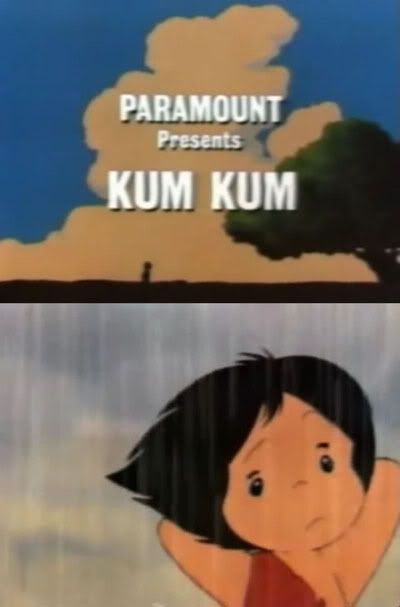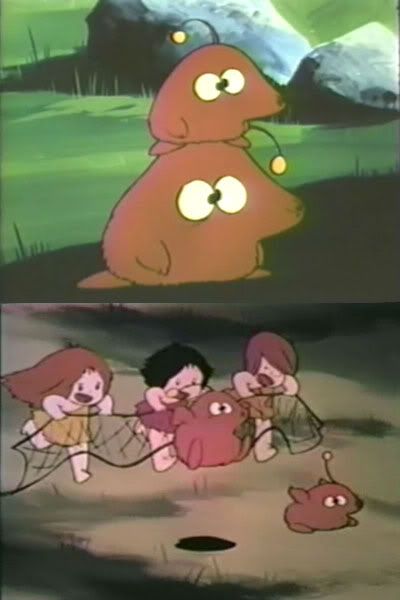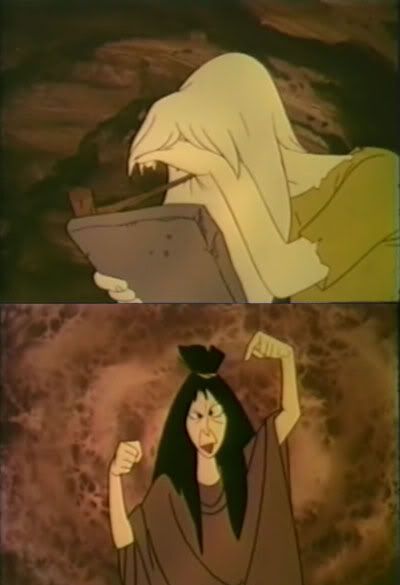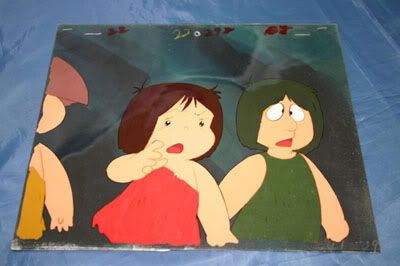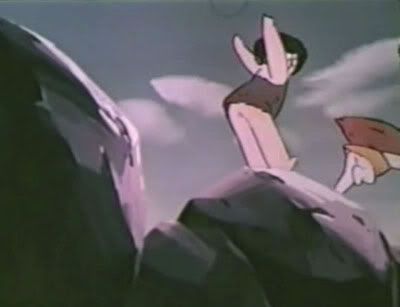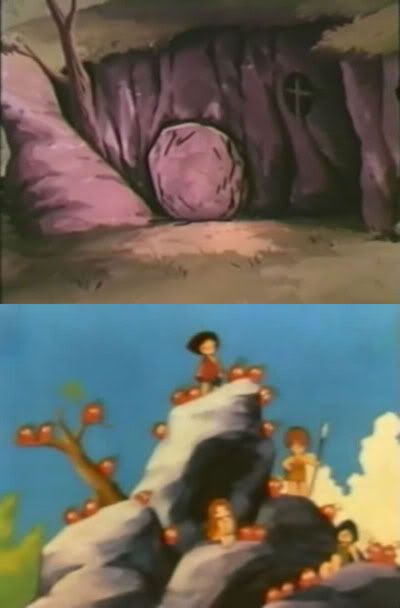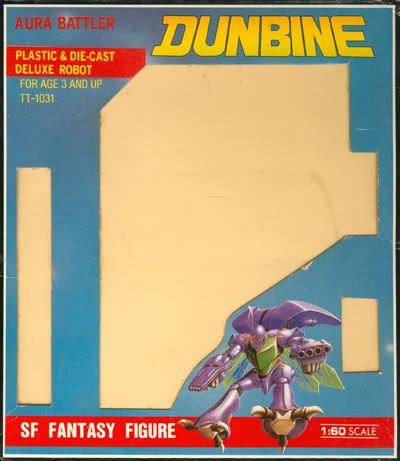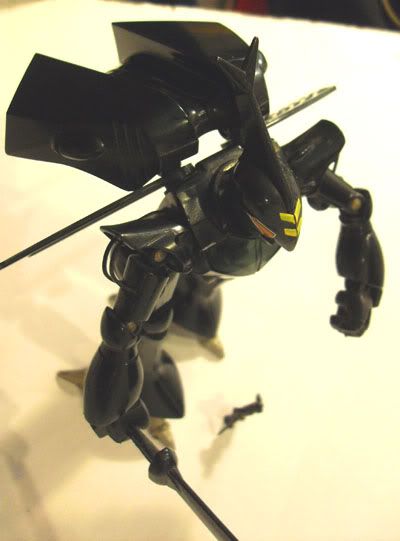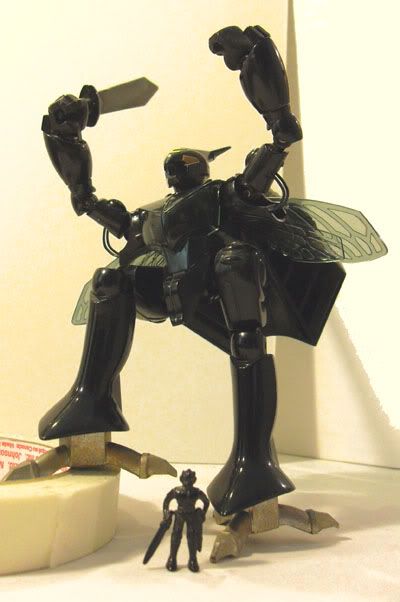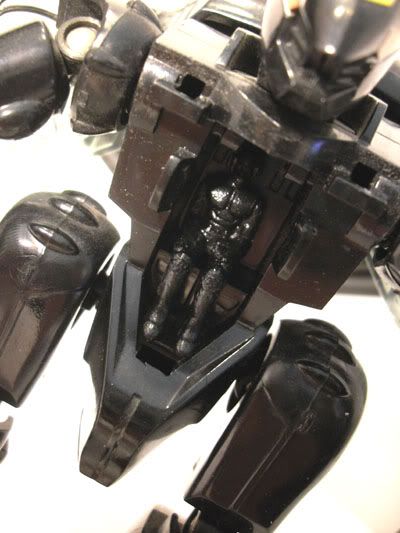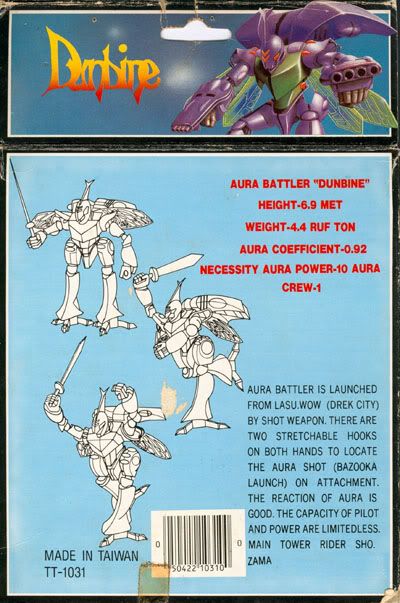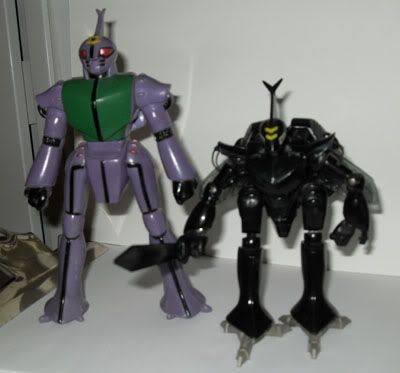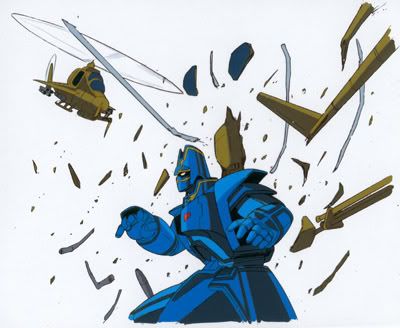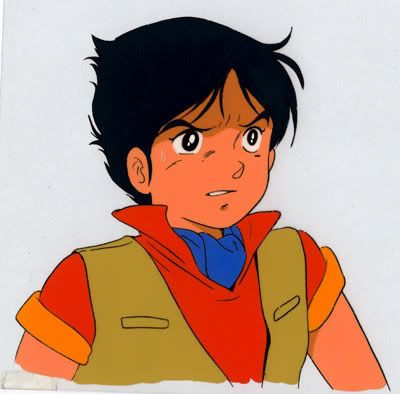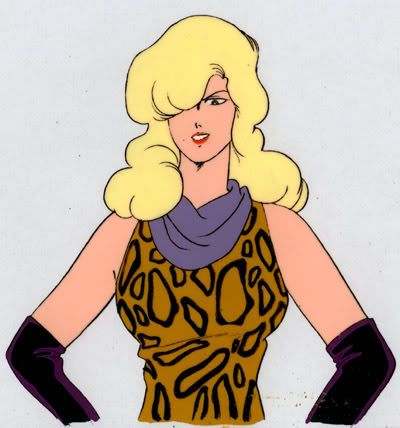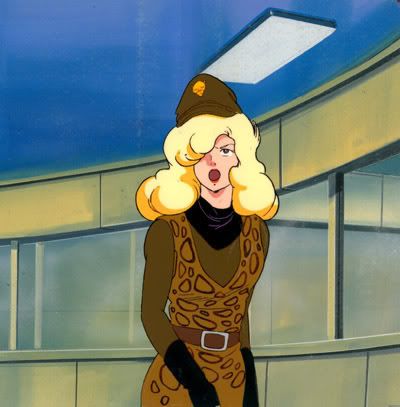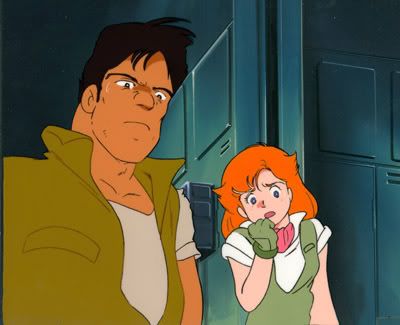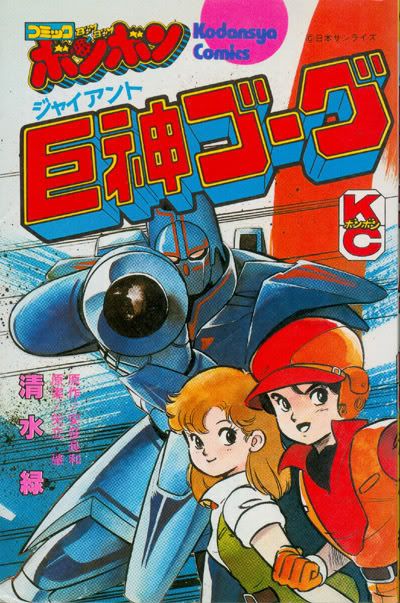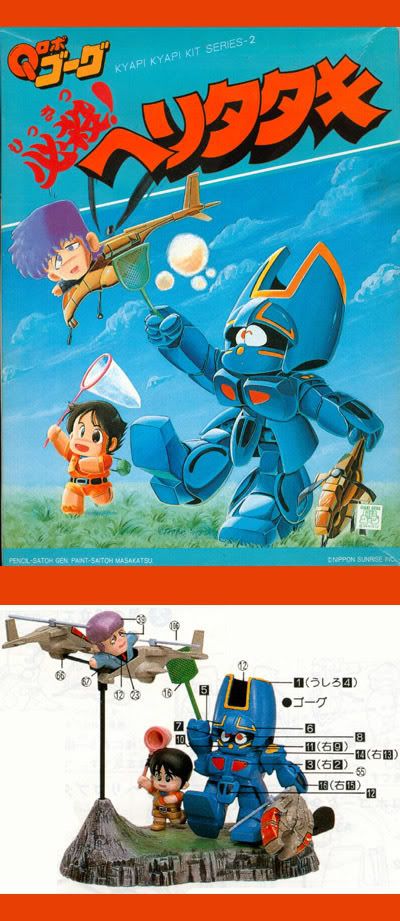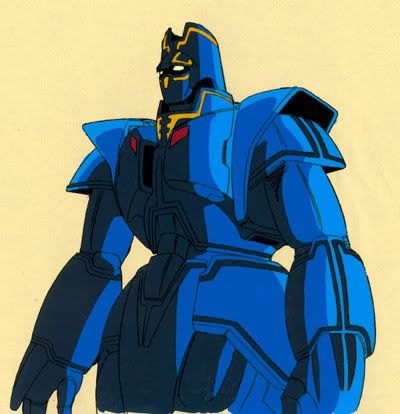In a defenseless world where war has been outlawed, only one brave scientist stands between the alien hordes and our precious Earth. Can his super robot creations protect us all from destruction?

Sure, this is the basis for hundreds of Japanese cartoons. But CHORIKI ROBO GALATT (aka “Galatt The Great”) dares to take this concept and “transform” (haw haw) it into a gag comedy! Premiering on October 6 1984 and lasting until April of next year, GALATT’s 25 episodes were a humorous digression among Nippon Sunrise’s more serious mid-80s series like VIFAM, the sadly neglected PANZER WORLD GALIENT, and HEAVY METAL L.GAIM. Yet GALATT’s squat comedy robot action idiom would live on in later Sunrise series like GRANZORT and WATARU, as well as the Ashi Productions hit NG LAMUNE & 40, and something called S.D. GUNDAM, whatever the heck that could be.
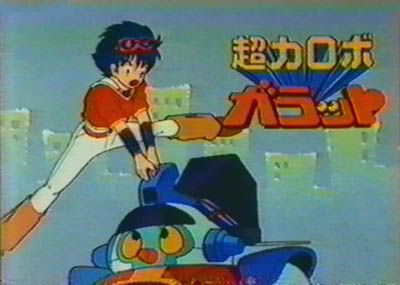
Two things distinguish GALATT. One is the Yumi Murata theme song, which is fun and funky with great 80’s style techno hooks. I mean, come on, hear the song and you’ll be mumbling “G-A-L-A...T-T” to yourself for weeks. The other thing is the running gag about how our genius inventor, Dr. Kiwi, is a total child molester. Seriously, he spends the show trying to grope the female lead, 13-year old Patty Pumpkin. Hell, he spends the OPENING CREDITS of the show trying to grope Patty Pumpkin. And this is not portrayed as a serious issue, as a “very special episode” of DIFF'RENT STROKES guest-starring Gordon Jump, or as anything anybody should be particularly concerned about. It’s just joke fodder. Oh Japan, you so crazy.
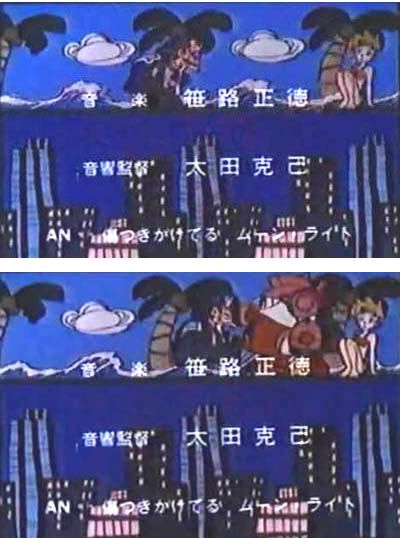
Yes, even in the opening credits.
When he isn’t trying for the inappropriate touch, Dr. Kiwi is working the whole DR SLUMP comedy inventor motif pretty hard. The show as a whole owes a lot to DR SLUMP, actually; a wacky SF gag show starring a loser inventor can’t help but feel similar. Of course Dr. Slump lusts after the more age-appropriate Midori and rightfully considers 13-year old Akane a total pest.
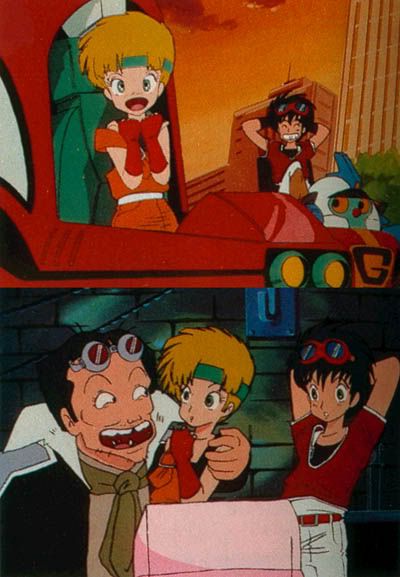
Bad touch, Doctor. Bad touch.
Anyway, in between his “Barely Legal” subscription renewals, Dr. Kiwi invented a super metal out of stuff he had lying around the house. Just in time too, because the Universal Real Estate Syndicate has arrived to carve Earth up into subdivisions and turn it into a galactic Levittown with their legions of giant combat robot Century 21 sales representatives. This is terrible for just about everybody except Dr. Kiwi, because Dr. Kiwi has been using the threat of alien invasion to bilk cash out of people for years. Now that the aliens have finally arrived for real, it’s time for Dr. Kiwi to deliver the goods!

Michael, Patty, Camille, Dr. Kiwi
Since Dr. Kiwi spends a lot of time hanging around the local junior high (WON’T SOMEBODY THINK OF THE CHILDREN??) he knows Michael Marsh, your typical clean-cut wide-awake youth. Michael has a squat robot watchdog-buddy named Janbu, which after some retooling from Dr. Kiwi is suddenly able to transform into Galatt, a brave robot fighter with a Galatt Blaster, a Galatt Javelin, etc. Michael’s girlfriend, the aforementioned, long-suffering Patty Pumpkin, ALSO has a robot helper, and this “Patigu” also gets the power upgrade –including factory-standard Patigu Slicer and Patigu Shot. When annoying rich kid / rival Reggie Mantle – er, I mean Camille Cashmere comes to town, his robot butler “Kamigu” also gets the Galatt treatment to become an 8.8 meter robot with a green color scheme, and a bazooka.

Janbu, Patigu, Kamigu
And just when you think things were getting too linear, the show will casually toss in a cameo from the Sumo Sisters, “Dosukoi the elder and younger”, two schoolgirls whose name is a sumo wrestler exclamation and whose task in GALATT is to keep the nonsense at appropriately high levels.
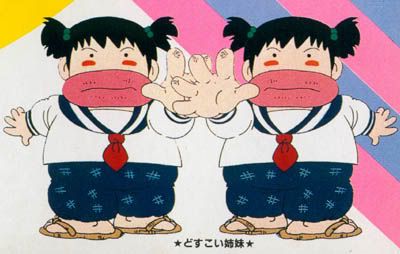
Okay then.
Veteran mecha designer (you’ve seen his work in something called GUNDAM) Kunio Okawara’s substantial yet classy design work is on full display in GALATT; the cutesy Janbu robots are both functional and friendly and the Galatt-sized combat mecha satisfy both as inspirational pieces of design and as fighting machines. Guest mechanical designs were by Koichi Ohata, known for his later work on everybody’s second least favorite anime M.D. GEIST. Character designer Toyoo Ashida, credited on everything from SPACE BOY SORAN to SPACE BATTLESHIP YAMATO, from DEL POWER X to, unsurprisingly, WATARU and GRANZORT, brings his 1980s A-game to the show with headbands, sideways-mounted sun visors, and the popular “overalls with one strap down” look for ladies that has mesmerized the male gaze since overalls were invented.
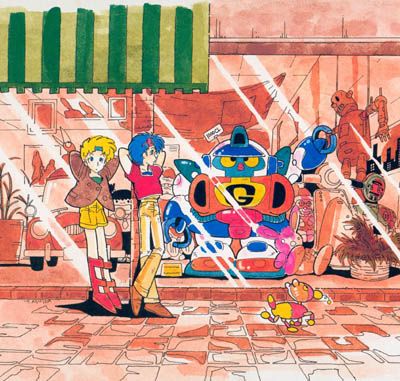
LP cover art by T. Ashida
And that’s the show; Michael, Patty and Camille battle space pirates and evil plans of the Galactic Real Estate Overlords while defending Patty’s virtue from the grotesquely inappropriate advances of Dr. Kiwi. GALATT fansubs are nonexistent and even raw Japanese episodes were hard to come by, so the series didn’t get the same critical examination afforded anime from the same time period. Considered alongside contemporary shows like VIFAM, GIANT GORG, etc, it would be easy to assume GALATT has the same narrative heft. But let’s face it, VIFAM this ain’t. GALATT’s a lightweight; a gag-a-minute show with pleasant visuals and a disturbing pedo subtext that likely explains its absence from the overseas market.
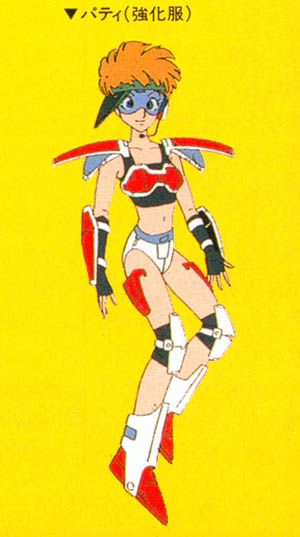
Patty's super robot fighting suit by Jockey For Her
Poorly translated GALATT episode guide:
1. Galatt challenges the arrival of evil!
2. If a dog barks, a mechanical monster will appear!
3. The appearance of Camille, the beautiful rival!
4. Born with a smile – Patigu!
5. Dangerous mistake! Good weather is sometimes bad
6. Kisses are wasted on pirate children
7. Find the master thief, Janbu!
8. Eggs falling from the sky?
9. Battle! This obstacle course is murder!
10. Is it an ancient romance? The Doctor’s Abnormal Greed
11. Wandering Hero: Space I
12. Dinosaur Ranch Death Duel: Space II
13. A Stuntman Reeks Of Danger: Space III
14. The Messenger Of Justice Is A Bounty Hunter? Space IV
15. Return With A Disadvantage
16. The Customer Has Psychic Powers?
17. Remember to dance, Janbu!
18. The Doctor’s End Is Cold
19. Heart Pounding! A Corps Of Beautiful Women in the Clouds?
20. Galatt might also like love
21. What the heck? Sara Marian Dothan is kidnapped?
22. Meow of surprise! Tsu Mihi’s exclamation of love!
23. Galatt crisis – Michael’s mistake!
24. Never surrender! Battle of the fireworks counterattack!
25. Shout it out loud – DOSUKOI!

It's cool when girls hit on you but NOT LIKE THIS
We can’t fault GALATT for being merely diverting – let’s be honest, one of the characters is named “Patty Pumpkin”, and expecting it to be another XABUNGLE or L.GAIM is asking too much. Like they say in the fight game, you gotta punch your weight, and as a zany gag show involving space robots and whacked-out mad scientists GALATT holds its own with the best of this admittedly small sub-sub genre.
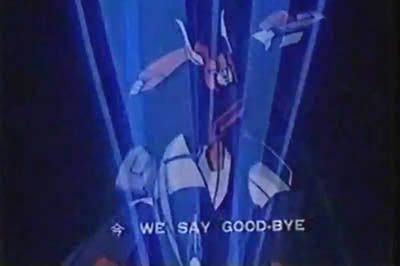

Sure, this is the basis for hundreds of Japanese cartoons. But CHORIKI ROBO GALATT (aka “Galatt The Great”) dares to take this concept and “transform” (haw haw) it into a gag comedy! Premiering on October 6 1984 and lasting until April of next year, GALATT’s 25 episodes were a humorous digression among Nippon Sunrise’s more serious mid-80s series like VIFAM, the sadly neglected PANZER WORLD GALIENT, and HEAVY METAL L.GAIM. Yet GALATT’s squat comedy robot action idiom would live on in later Sunrise series like GRANZORT and WATARU, as well as the Ashi Productions hit NG LAMUNE & 40, and something called S.D. GUNDAM, whatever the heck that could be.

Two things distinguish GALATT. One is the Yumi Murata theme song, which is fun and funky with great 80’s style techno hooks. I mean, come on, hear the song and you’ll be mumbling “G-A-L-A...T-T” to yourself for weeks. The other thing is the running gag about how our genius inventor, Dr. Kiwi, is a total child molester. Seriously, he spends the show trying to grope the female lead, 13-year old Patty Pumpkin. Hell, he spends the OPENING CREDITS of the show trying to grope Patty Pumpkin. And this is not portrayed as a serious issue, as a “very special episode” of DIFF'RENT STROKES guest-starring Gordon Jump, or as anything anybody should be particularly concerned about. It’s just joke fodder. Oh Japan, you so crazy.

Yes, even in the opening credits.
When he isn’t trying for the inappropriate touch, Dr. Kiwi is working the whole DR SLUMP comedy inventor motif pretty hard. The show as a whole owes a lot to DR SLUMP, actually; a wacky SF gag show starring a loser inventor can’t help but feel similar. Of course Dr. Slump lusts after the more age-appropriate Midori and rightfully considers 13-year old Akane a total pest.

Bad touch, Doctor. Bad touch.
Anyway, in between his “Barely Legal” subscription renewals, Dr. Kiwi invented a super metal out of stuff he had lying around the house. Just in time too, because the Universal Real Estate Syndicate has arrived to carve Earth up into subdivisions and turn it into a galactic Levittown with their legions of giant combat robot Century 21 sales representatives. This is terrible for just about everybody except Dr. Kiwi, because Dr. Kiwi has been using the threat of alien invasion to bilk cash out of people for years. Now that the aliens have finally arrived for real, it’s time for Dr. Kiwi to deliver the goods!

Michael, Patty, Camille, Dr. Kiwi
Since Dr. Kiwi spends a lot of time hanging around the local junior high (WON’T SOMEBODY THINK OF THE CHILDREN??) he knows Michael Marsh, your typical clean-cut wide-awake youth. Michael has a squat robot watchdog-buddy named Janbu, which after some retooling from Dr. Kiwi is suddenly able to transform into Galatt, a brave robot fighter with a Galatt Blaster, a Galatt Javelin, etc. Michael’s girlfriend, the aforementioned, long-suffering Patty Pumpkin, ALSO has a robot helper, and this “Patigu” also gets the power upgrade –including factory-standard Patigu Slicer and Patigu Shot. When annoying rich kid / rival Reggie Mantle – er, I mean Camille Cashmere comes to town, his robot butler “Kamigu” also gets the Galatt treatment to become an 8.8 meter robot with a green color scheme, and a bazooka.

Janbu, Patigu, Kamigu
And just when you think things were getting too linear, the show will casually toss in a cameo from the Sumo Sisters, “Dosukoi the elder and younger”, two schoolgirls whose name is a sumo wrestler exclamation and whose task in GALATT is to keep the nonsense at appropriately high levels.

Okay then.
Veteran mecha designer (you’ve seen his work in something called GUNDAM) Kunio Okawara’s substantial yet classy design work is on full display in GALATT; the cutesy Janbu robots are both functional and friendly and the Galatt-sized combat mecha satisfy both as inspirational pieces of design and as fighting machines. Guest mechanical designs were by Koichi Ohata, known for his later work on everybody’s second least favorite anime M.D. GEIST. Character designer Toyoo Ashida, credited on everything from SPACE BOY SORAN to SPACE BATTLESHIP YAMATO, from DEL POWER X to, unsurprisingly, WATARU and GRANZORT, brings his 1980s A-game to the show with headbands, sideways-mounted sun visors, and the popular “overalls with one strap down” look for ladies that has mesmerized the male gaze since overalls were invented.

LP cover art by T. Ashida
And that’s the show; Michael, Patty and Camille battle space pirates and evil plans of the Galactic Real Estate Overlords while defending Patty’s virtue from the grotesquely inappropriate advances of Dr. Kiwi. GALATT fansubs are nonexistent and even raw Japanese episodes were hard to come by, so the series didn’t get the same critical examination afforded anime from the same time period. Considered alongside contemporary shows like VIFAM, GIANT GORG, etc, it would be easy to assume GALATT has the same narrative heft. But let’s face it, VIFAM this ain’t. GALATT’s a lightweight; a gag-a-minute show with pleasant visuals and a disturbing pedo subtext that likely explains its absence from the overseas market.

Patty's super robot fighting suit by Jockey For Her
Poorly translated GALATT episode guide:
1. Galatt challenges the arrival of evil!
2. If a dog barks, a mechanical monster will appear!
3. The appearance of Camille, the beautiful rival!
4. Born with a smile – Patigu!
5. Dangerous mistake! Good weather is sometimes bad
6. Kisses are wasted on pirate children
7. Find the master thief, Janbu!
8. Eggs falling from the sky?
9. Battle! This obstacle course is murder!
10. Is it an ancient romance? The Doctor’s Abnormal Greed
11. Wandering Hero: Space I
12. Dinosaur Ranch Death Duel: Space II
13. A Stuntman Reeks Of Danger: Space III
14. The Messenger Of Justice Is A Bounty Hunter? Space IV
15. Return With A Disadvantage
16. The Customer Has Psychic Powers?
17. Remember to dance, Janbu!
18. The Doctor’s End Is Cold
19. Heart Pounding! A Corps Of Beautiful Women in the Clouds?
20. Galatt might also like love
21. What the heck? Sara Marian Dothan is kidnapped?
22. Meow of surprise! Tsu Mihi’s exclamation of love!
23. Galatt crisis – Michael’s mistake!
24. Never surrender! Battle of the fireworks counterattack!
25. Shout it out loud – DOSUKOI!

It's cool when girls hit on you but NOT LIKE THIS
We can’t fault GALATT for being merely diverting – let’s be honest, one of the characters is named “Patty Pumpkin”, and expecting it to be another XABUNGLE or L.GAIM is asking too much. Like they say in the fight game, you gotta punch your weight, and as a zany gag show involving space robots and whacked-out mad scientists GALATT holds its own with the best of this admittedly small sub-sub genre.

